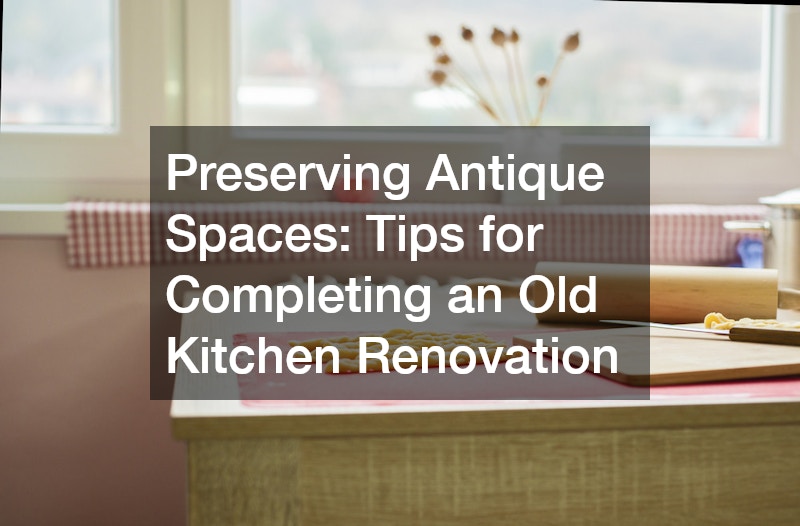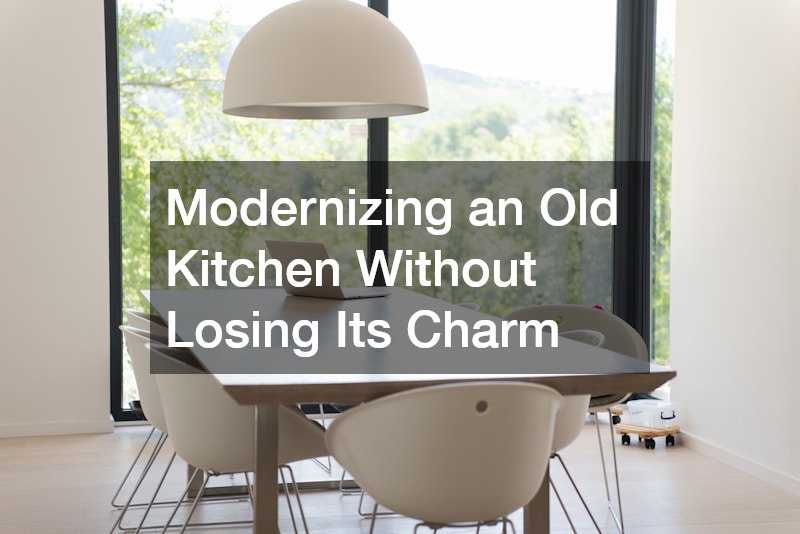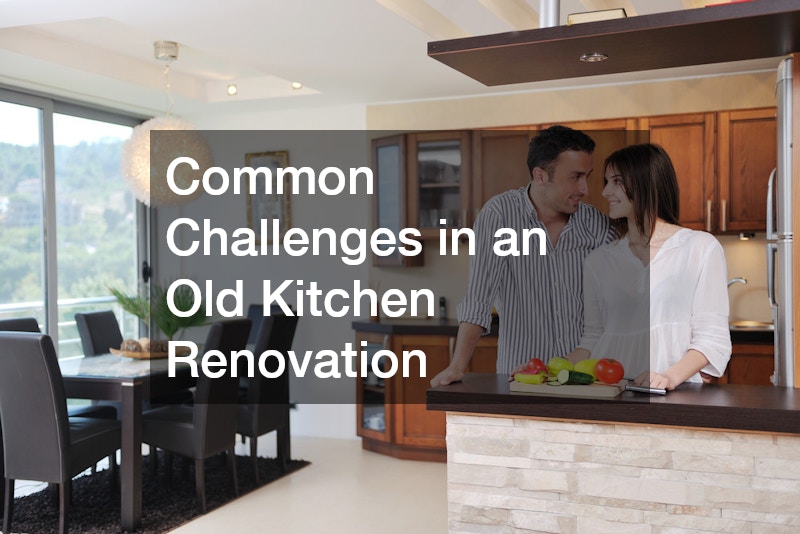
Preserving Antique Spaces Tips for Completing an Old Kitchen Renovation
Renovating an old kitchen is one of the most rewarding home improvement projects a homeowner can undertake. Antique kitchens carry a sense of warmth, craftsmanship, and nostalgia that modern designs often strive to replicate. However, the challenge lies in updating the space for modern comfort and functionality without losing its original charm. Preserving the historic details of an older kitchen—such as original cabinetry, woodwork, or tilework—while introducing contemporary amenities like efficient appliances, improved ventilation, and durable countertops requires a balanced approach.
This process involves thoughtful planning, collaboration with experienced kitchen remodelers, and a clear understanding of both historical preservation and modern design principles. Homeowners must consider the practical aspects of a renovation—such as demolition, kitchen hood installation, and countertop installers—alongside preservation-focused efforts like mildew removal, water damage restoration service, and sourcing authentic materials. By blending functionality with preservation, you can create a kitchen that honors its past while meeting the needs of today’s lifestyle.
How to Start an Old Kitchen Renovation Project

Assessing the Current State of Your Kitchen
Before any renovation begins, it’s essential to evaluate the condition of your existing kitchen. Start by inspecting structural components, including the flooring, walls, and cabinetry. Look for signs of damage such as wood rot, leaks, or electrical issues. You may also encounter mold or moisture accumulation, which will require mildew removal or assistance from a water damage restoration service.
It’s also beneficial to assess the usability of the current layout. Does the kitchen have adequate counter space? Is the ventilation system up to code? Consulting with a general contractor or kitchen remodelers can provide a professional assessment of what needs updating versus what can be preserved.
Setting a Realistic Budget
Budgeting for an old kitchen renovation requires balancing preservation goals with modern upgrades. Because older homes often hide unforeseen issues—like outdated wiring or plumbing—your budget should include a contingency fund of at least 10–15 percent. Costs will vary depending on the materials chosen and the professionals hired, such as countertop installers, air conditioning contractors, or kitchen equipment repair specialists.
Research the cost of materials that match the antique style, such as marble, soapstone, or butcher block countertops. If historical authenticity is important, budget for custom millwork or reproduction fixtures that mimic period-appropriate designs.
Creating a Renovation Timeline
A realistic timeline is crucial to ensure the project runs smoothly. Start by identifying which tasks are sequential, such as completing demolition before new installations. Factor in lead times for custom orders and potential delays for specialty materials. Working closely with a general contractor ensures your project timeline aligns with your expectations and that the sequence of work—from window cleaning and prep to kitchen hood installation—is managed efficiently.
What to Prioritize in an Old Kitchen Renovation
Maintaining Structural Integrity
Preserving the integrity of an old kitchen begins with ensuring the structure is sound. Before any aesthetic updates, verify that the walls, flooring, and ceiling joists are stable. Reinforce old beams if necessary and address any foundational issues before adding new elements. Hiring experienced kitchen remodelers and a general contractor will help you preserve structural strength while meeting modern safety codes.
Focusing on Essential Updates
Some upgrades are non-negotiable in a modern kitchen. Electrical rewiring, plumbing updates, and proper ventilation should take priority. If your kitchen lacks a venting system, schedule a kitchen hood installation to improve air quality and safety. Updating to energy-efficient lighting and appliances will also enhance functionality and reduce long-term costs.
Balancing Style with Functionality
Striking the right balance between maintaining the kitchen’s original style and adding modern conveniences is essential. Preserve original details like crown molding, cabinetry hardware, and wood paneling while integrating subtle upgrades such as modern air conditioning contractors systems or under-cabinet lighting.
Preserving Historical Details During the Renovation
Identifying Key Historical Features
Every antique kitchen has unique details worth preserving, whether it’s an old farmhouse sink, original cabinetry, or handcrafted tiles. Document these features with photos before starting demolition. This step ensures they can be restored or reinstalled correctly later.
Sourcing Authentic Materials
Finding authentic materials that complement the era of your home can be challenging but rewarding. Search for reclaimed wood, antique tiles, or vintage fixtures from architectural salvage stores. Partnering with kitchen remodelers experienced in historical projects will help ensure that replacements closely resemble the originals.
Hiring Preservation Specialists
Hiring specialists who understand historical architecture is key to maintaining authenticity. These professionals can guide you in restoring or replicating period details while complying with current building standards. A general contractor who collaborates with preservation experts can help integrate new materials without compromising your kitchen’s antique character.
Modernizing an Old Kitchen Without Losing Its Charm

Integrating Modern Appliances
Modern appliances can coexist beautifully within an antique kitchen if chosen carefully. Opt for retro-inspired ranges or refrigerators that mimic the style of older models. Concealing dishwashers and microwaves behind custom cabinetry panels keeps the modern conveniences discreet. Working with kitchen equipment repair professionals ensures that even vintage-style appliances function safely and efficiently.
Retaining Original Design Elements
Keep as many original architectural details as possible. Restored hardwood floors, exposed brick, or original windows can provide warmth and authenticity. For instance, professional window cleaning and minor glass restoration can breathe new life into old windows without replacement.
Incorporating Subtle Modern Touches
Add subtle contemporary updates that enhance comfort without disrupting the historical aesthetic. Consider underfloor heating, soft-close drawers, or integrated lighting systems. Collaborating with kitchen remodelers and countertop installers ensures these features blend seamlessly with the overall design.
Timeless Design Ideas for an Old Kitchen Renovation
Embracing Classic Color Schemes
Classic colors like cream, soft gray, sage green, or navy blue are timeless choices for antique kitchens. They complement wood tones and vintage hardware beautifully. To preserve an authentic feel, avoid overly trendy hues that may clash with the home’s historical elements.
Choosing Vintage-Inspired Fixtures
Period-appropriate fixtures can tie the entire design together. Opt for brass or oil-rubbed bronze hardware, apron-front sinks, and decorative lighting reminiscent of early 20th-century designs. If lighting upgrades require rewiring, consult a general contractor or licensed electrician to ensure safety.
Incorporating Traditional Flooring
Natural materials such as hardwood, terracotta tile, or stone maintain the warmth of an older kitchen. When possible, refinish original flooring rather than replacing it. If water damage is present, consult a water damage restoration service to repair the affected areas before refinishing.
Ensuring a Sustainable Renovation Process
Selecting Eco-friendly Materials
Preserving an antique kitchen offers a natural opportunity for sustainable renovation. Reuse and restore as much as possible—cabinet frames, doors, and even hardware can often be salvaged. When new materials are required, choose eco-friendly options like bamboo, reclaimed wood, or low-VOC paints.
Implementing Energy-efficient Solutions
Energy efficiency doesn’t have to detract from vintage charm. Install LED lighting, insulated windows, and energy-efficient appliances. A skilled air conditioning contractor can help you upgrade HVAC systems discreetly, ensuring climate control without visible modern vents.
Recycling and Reusing Older Components
Instead of discarding old materials, repurpose them creatively. Reclaimed wood can be transformed into shelving, while antique hardware may find a second life on new cabinetry. Your general contractor can assist in determining which materials are safe to reuse and which require replacement.
Common Challenges in an Old Kitchen Renovation

Dealing with Outdated Plumbing and Wiring
One of the most common challenges in older kitchens is outdated infrastructure. Old wiring and galvanized plumbing may not meet modern standards. Address these issues early in the renovation to avoid safety risks. Partnering with licensed electricians and plumbers ensures compliance with current codes.
Addressing Structural Concerns
Older homes often hide structural surprises behind walls or under floors. During demolition, you may discover damaged beams, rot, or termite damage. Consulting with a general contractor early on can help manage these unexpected findings efficiently.
Overcoming Limitations of Space
Antique kitchens were typically smaller and designed for simpler cooking needs. To maximize functionality, consider space-saving designs such as custom cabinetry, corner drawers, or built-in shelving. Collaborate with kitchen remodelers to create efficient layouts that retain vintage aesthetics.
Planning for Storage in an Old Kitchen Renovation
Maximizing Existing Storage Options
Preserving antique cabinetry whenever possible maintains the historical feel of the kitchen. Add internal organizers, pull-out trays, or lazy Susans to enhance functionality without altering the exterior.
Customizing New Storage Solutions
If your existing cabinets are beyond repair, consider commissioning custom reproductions that reflect the original design. Professional countertop installers and cabinetmakers can work together to ensure proper fit and finish.
Utilizing Vertical Space
Older kitchens often have high ceilings that can be utilized for additional storage. Add ceiling-height cabinets or open shelving for display. Be sure to maintain a balanced visual flow by matching materials and finishes to the room’s existing elements.
Maintaining Aesthetic Flow in Open Concept Spaces
Creating Cohesion Between Rooms
If your antique kitchen opens into adjacent living areas, maintaining visual continuity is essential. Use similar color palettes, flooring, or trim styles across spaces. Collaborating with a general contractor ensures that transitions between rooms feel seamless while preserving the home’s character.
Using Consistent Color Palettes
Color consistency enhances harmony in open-concept designs. Consider repeating accent colors or materials—such as a matching stone from your countertop installers—in nearby rooms for a cohesive aesthetic.
Maintaining Seamless Transitions
Transitions can be enhanced through thoughtful design choices such as matching moldings, shared lighting styles, or continuous flooring. Periodic window cleaning helps maintain brightness and emphasizes architectural flow between connected areas.
Cost-effective Strategies for an Old Kitchen Renovation

Setting a Renovation Strategy
Begin by listing must-have upgrades versus nice-to-have features. Prioritize safety and functionality first—such as electrical upgrades, kitchen hood installation, or water damage repairs—before cosmetic enhancements.
DIY Techniques for Budget Saving
Homeowners can save money through selective DIY efforts. Painting walls, refinishing cabinet doors, or performing basic window cleaning can reduce labor costs. However, leave complex tasks like electrical work, plumbing, and demolition to professionals.
Prioritizing Affordable Upgrades
Simple, affordable changes can dramatically transform an antique kitchen. Replacing outdated hardware, refinishing surfaces, and investing in quality lighting are cost-effective ways to elevate aesthetics. Hiring reputable kitchen remodelers who offer transparent pricing helps you make the most of your budget.
Preserving an antique kitchen while upgrading it for modern use is both an art and a science. It requires careful planning, attention to detail, and collaboration with skilled professionals—including kitchen remodelers, countertop installers, and general contractors. Homeowners should prioritize structural integrity, energy efficiency, and historical authenticity throughout the process.
By incorporating eco-friendly practices, engaging water damage restoration services when needed, and maintaining historical details, your old kitchen can retain its soul while functioning as a comfortable, modern space. The right approach allows you to enjoy the timeless beauty of your home’s past while ensuring it remains functional for generations to come.



